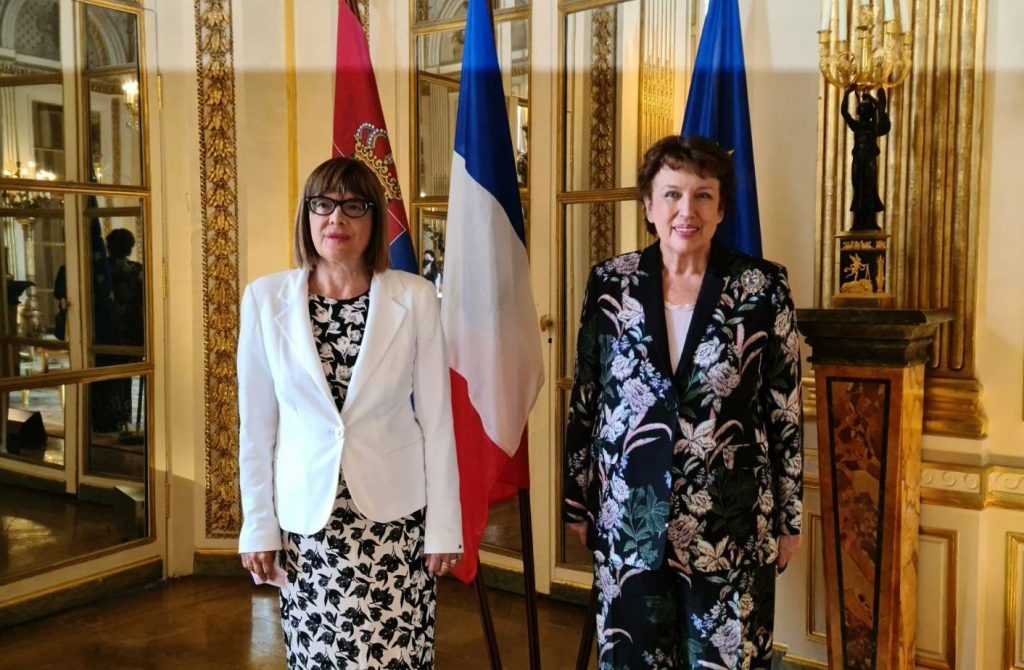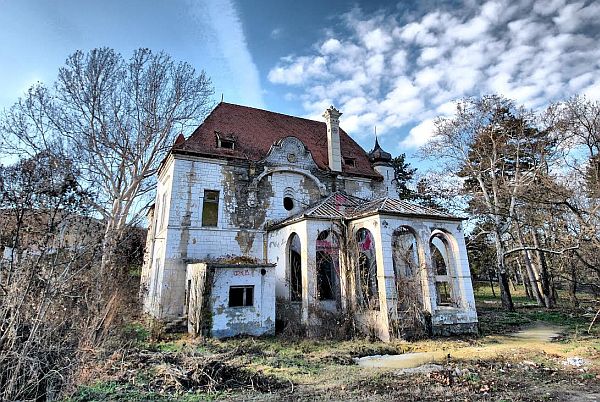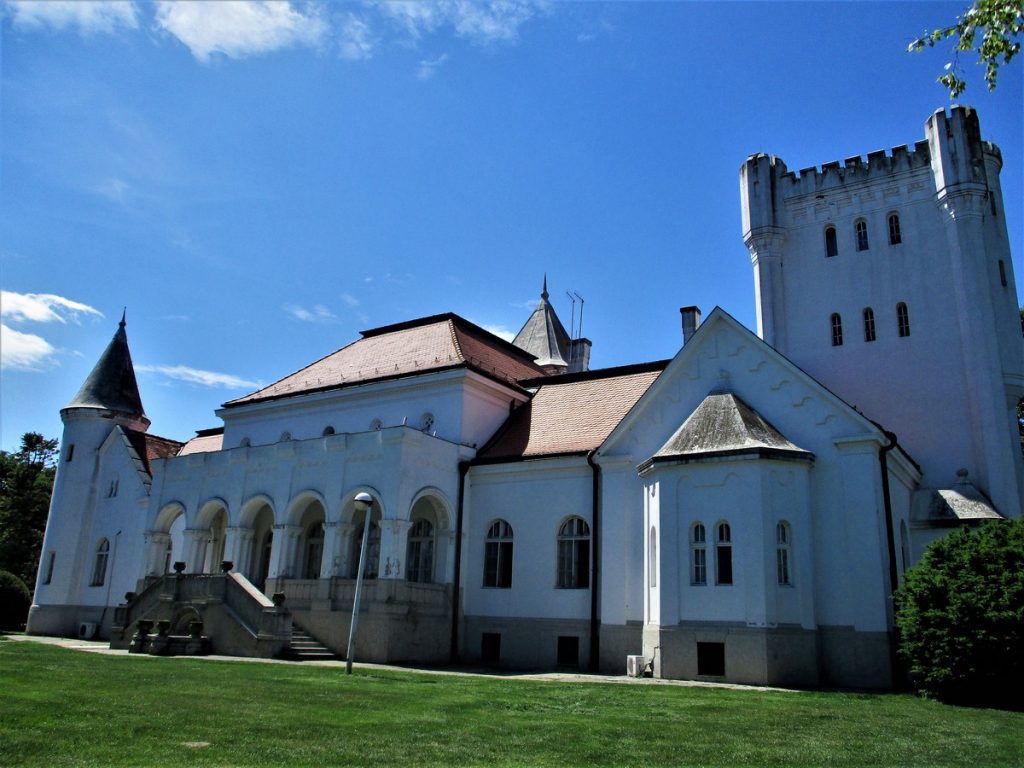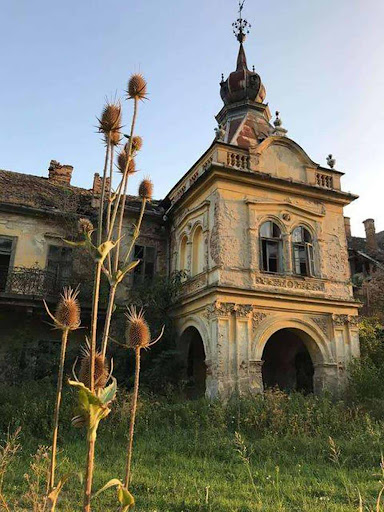Serbian Deputy Prime Minister and Minister of Culture and Information Maja Gojković met with French Minister of Culture, Roselyne Bachelot-Narquin, in Paris last month.
Gojković and Bachelot-Narquin talked, among other things, about the options for the implementation of the Dvorci Srbije (The Castles of Serbia) project, which includes 118 castles, villas and summer houses on the territory of Serbia, with the help of European funds. They agreed to make a list of priorities of 30 facilities fit for the reconstruction, as well as to determine the best way to revive this historical, cultural and tourist potential of Serbia with the support of French experts.

An online meeting of representatives of the Ministry of Culture and Information, as well as Serbian and French experts in this field, was held on this topic last week.
The meeting was attended by:
– Danijela Vanušić, acting Assistant Minister for the protection of cultural heritage and digitalization and Chairwoman of the Working Group;
– Agnès Saal, Ministry of Culture of the French Republic, General Secretariat, MECI – Mission Expertise Culturelle International, Head of Mission;
– Victoire Citroen, Ministry of Culture of the Republic of France, General Secretariat, MECI – Mission Expertise Culturelle international, project manager;
– Olivia Bourrat, Ministry of Culture of the French Republic, General Secretariat, MECI – Mission Expertise Culturelle international, project manager, chief curator of cultural heritage;
– Aniela Cornet, Ministry of Culture of the French Republic, General Secretariat, MECI – Mission Expertise Culturelle International;
– Fabienne Brutt, Project Manager, Bilateral Sector, Ministry of Culture of the French Republic;
– Sanda Šimić, Head of the Department for Planning, Establishment and Supervision of Cross-Border and Transnational Cooperation and EU Macro-regional Strategies and Transnational Cooperation Programs, Ministry of European Integration;
– Ivana Davidović, Head of the Group for Coordination of Macro-Regional Strategies and Programs of Transnational Cooperation, Ministry of European Integration;
– Nemanja Sarač, head of the group for the promotion of the digital agenda and evaluation of project results, Ministry of Trade, Tourism and Telecommunications;
– Miloš Gajić, advisor in the Sector for the protection of cultural heritage and digitalization.

At the beginning of the meeting, the Chairwoman of the Working Group, Danijela Vanušić, asked her colleagues from France to express their impressions after getting acquainted with the material submitted to them based on the conclusions from the previous meeting.
Ms Agnès Saal thanked for the submitted material and said that the French side thought it was necessary to define the facilities where restoration work was needed and that the French were ready to send experts to Serbia in September or October to review the condition of castles in need of rehabilitation. The mission would consist of two or three experts from culture and tourism and an architect-conservator.
The Serbian side expressed their support for the French experts coming to Serbia. It was also underlined that most of the facilities are located in the north of the country, in Vojvodina, but that an adequate itinerary would be organized for experts from France. It was proposed that Serbian formed a working team, which would consist of tourism experts, i.e. experts from the Institute for the Protection of Cultural Monuments. The working team would provide specialized field support to their French colleagues, as well as required logistics support.

Regarding the sources of funding for the next phases of the project, the representatives of the Ministry of European Integration pointed out that four cross-border cooperation programmes and two transnational cooperation programmes recognize culture and tourism as priorities. The Ministry representatives also said that the biggest opportunities for financing lie in cross-border cooperation projects, citing the example of the Subotica Synagogue and the implementation of that cross-border project with Hungary.
To remind, the Castles of Serbia: Protection of Cultural Heritage Working Group was established in November last year, immediately after the new Government of the Republic of Serbia was formed.
More information about 118 castles, courtyards, summer houses and villas that are under state protection is available on www.dvorcisrbije.rs

Robert Čoban, president of the Color Press Group and founder of the Foundation for the Protection of Cultural and Industrial Heritage, who publicly launched an initiative to rehabilitate castles throughout Serbia, told our website: “When we launched the Facebook group ‘Heritage without protection’ last September In less than a year, our initiative resulted in us now having French experts coming to Serbia to see our castles and make proposals for their rehabilitation. When, back in December last year, I presented this project to the French Ambassador to Serbia, H.E. Jean-Louis Falconi, we agreed that France’s experience in this area could be of great help to Serbia, namely, France has used its castles as first-class tourist attractions with some of them being turned into museums, some into luxury hotels and some in wineries. The whole industry employs tens of thousands of people across France, and I think it’s a great opportunity for our country as well – to protect the cultural heritage left to us by our ancestors and at the same time create new jobs.”